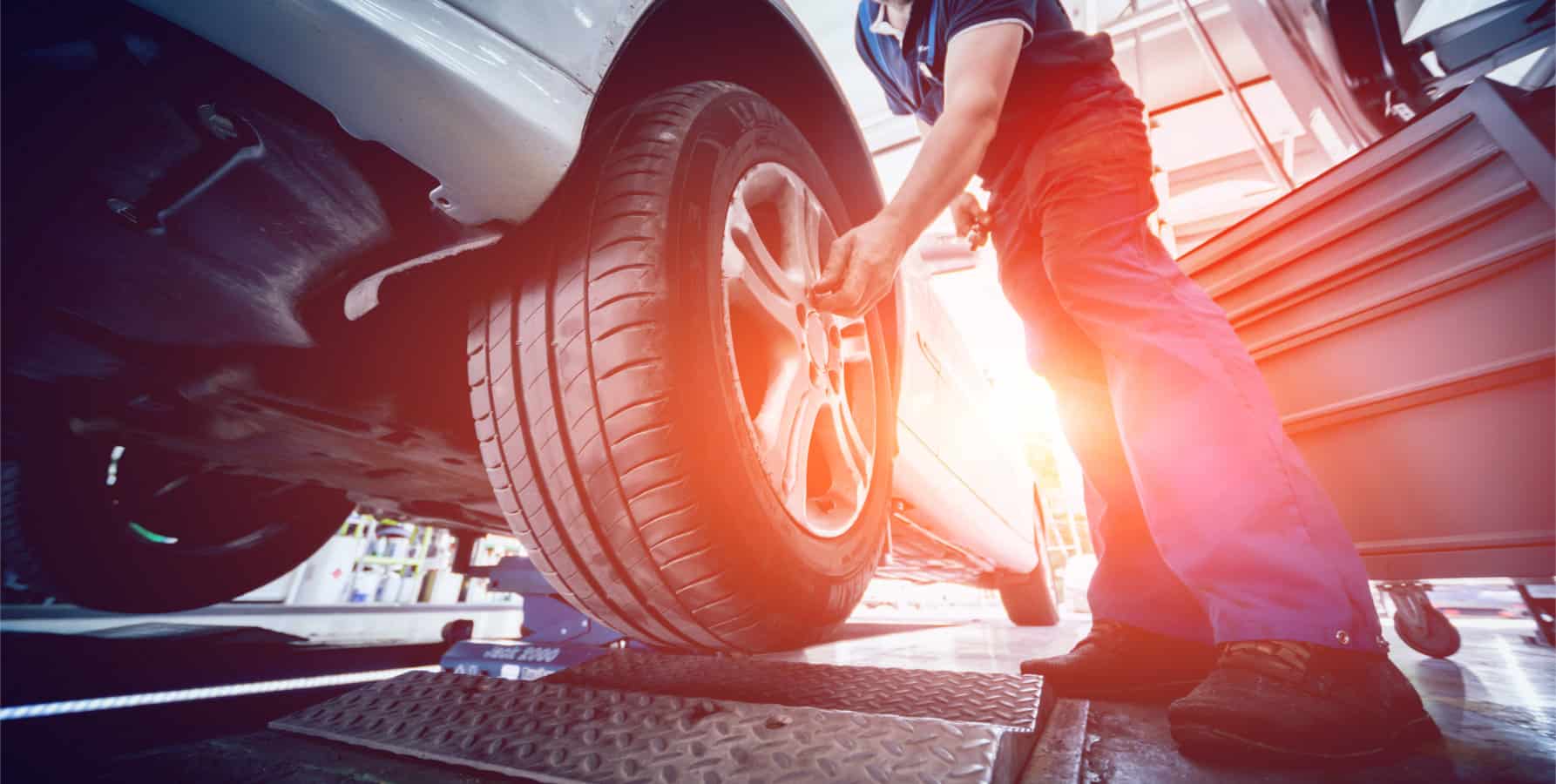WHEEL ALIGNMENT
Wheel Alignment San Jose
How important is wheel alignment?
Think of it this way: Research indicates that the average vehicle is driven about 12,000 miles per year. A car with a toe angle misadjustment of 0.34 degrees (only 0.17 inches) out of specification will drag the tires sideways for more than 68 miles by the end of the year!
What are the symptoms of a vehicle with incorrect alignment?
Have your vehicle checked if you notice:
Excessive or uneven tire wear
The vehicle pulls to the left or right
Feeling of looseness or wandering
Steering wheel vibration or shimmy
Steering wheel is not centered when the vehicle is moving straight ahead.




How often should I have my vehicle aligned?
Follow the vehicle manufacturer’s recommendation noted in your owner’s manual. As a general rule, have your wheel alignment near me checked every 10,000 miles or at least once a year.
The importance of Total Alignment:
Reduced Tire Wear: Improper alignment is a major cause of premature tire wear. Over the years, a properly aligned vehicle can add thousands of miles to tire life. Most tires are replaced prematurely due to adverse wear.
Better Gas Mileage: Gas mileage increases as rolling resistance decreases. Total Alignment sets all four wheels parallel, which along with proper inflation, minimizes rolling resistance.
Improved Handling: Does your car pull to one side? Do you constantly have to move the steering wheel to keep your car traveling straight ahead? Many handling problems can be corrected by Total Alignment service. With all the vehicle components aligned properly, road shock is more efficiently absorbed for a smoother ride.
Safer Driving: A suspension system inspection is part of the alignment procedure. This allows worn parts to be detected before they cause costly problems.

3 reasons why wheel alignment is required
To stop the vehicle from pulling to one side
To avoid undue wear on the tyres and the steering & suspension parts
Ultimately, to ensure an excellent road holding.
All new vehicles leave the factory with their alignment checked and adjusted.
What causes wheel alignment issues?
Alignment problems are mostly caused by wear and tear on suspension and steering parts.
They can also be the result of an impact on pothole or curb or a change in ride height due to a lowered or raised suspension.
If the vehicle pulls to one side of the road, chances are that the alignment procedure will show a difference in caster on the left and the right side.
If the steering wheel has an incorrect position when driving straight, probably the individual toe on the front and all the rear wheels is incorrect.

Alignment problems occur when the suspension and steering systems do not operate at their designated angles.
Wheel alignment near me consists of adjusting the angles of the wheels so that they are set to the car maker’s specification.
HOW OFTEN SHOULD YOU GET A CAR WHEEL ALIGNMENT?
A wheel alignment should be carried out:
After any severe driving incidents.
With every replacement of steering and suspension components.
At any time after the vehicle has encountered a major road hazard or curve.
Not carrying out the wheel alignment procedures may result in the camber and toe specifications drifting outside the manufacturer’s limit. This may lead to the vehicle pulling and premature wear of the tyre and the suspension parts.
Tyre wear leads to frequent replacement of tyres and pull/drifting leads to premature wear of the suspension parts, all of which add unnecessary cost for the owner.
Make sure a full wheel alignment procedure is carried out accurately and to the correct technical standards once you have carried out the replacements of steering and suspension parts.
Suspension, Brakes, Oil Changes, Tune-Up, Tires.
